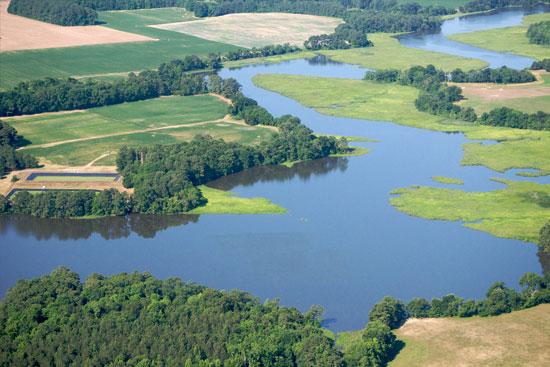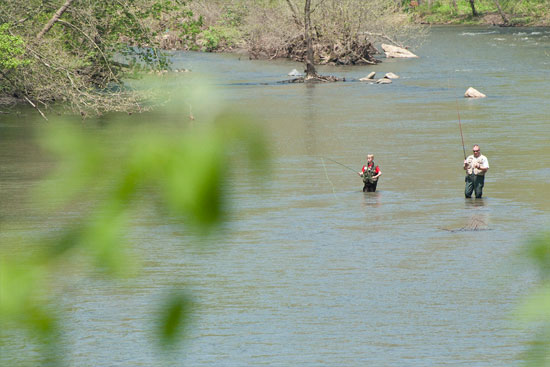Half of nation’s rivers and streams are in poor health
Waters across the United States are impaired by nutrient pollution and people's impact on the land.
More than half of the nation’s river and stream miles are in poor health, according to a new study from the U.S. Environmental Protection Agency (EPA).

The latest National Rivers and Streams Assessment, a sampling effort conducted during the summers of 2008 and 2009, found that 55 percent of the nation’s rivers and streams are in poor condition and 23 percent are in fair condition, their health impaired by nutrient pollution, a loss of streamside vegetation and bacterial and chemical contaminants.
These same stressors have impacted the Chesapeake Bay and its tidal waters. Excess nutrients can fuel the growth of algae blooms that suck oxygen from the water, creating “dead zones” within which animals cannot survive. A loss of streamside vegetation can boost erosion and push sand, soil and sediment into waterways, blocking sunlight from reaching underwater grasses and smothering the habitat that some aquatic organisms need to live or breed. And chemical contaminants—like, for instance, mercury—can accumulate in the tissues of fish, leading to fish consumption advisories in polluted waterways.

But rivers and streams are critical to the health of humans and wildlife alike, as sources of drinking water, food and habitat. According to the EPA, this survey suggests the need to better address pollution at its source, whether it is urban, suburban or agricultural runoff or the treatment of wastewater.
Learn what you can do to further Bay restoration, and read more about the National Rivers and Streams Assessment.

Comments
There are no comments.
Thank you!
Your comment has been received. Before it can be published, the comment will be reviewed by our team to ensure it adheres with our rules of engagement.
Back to recent stories